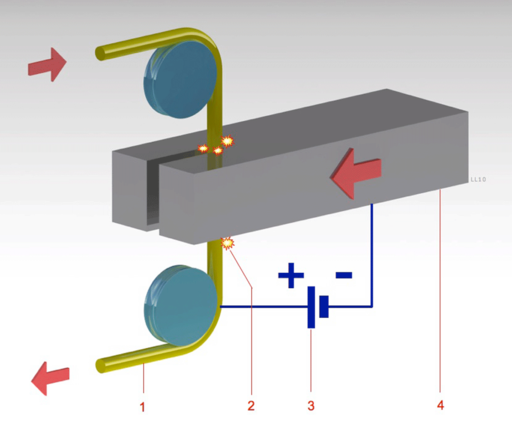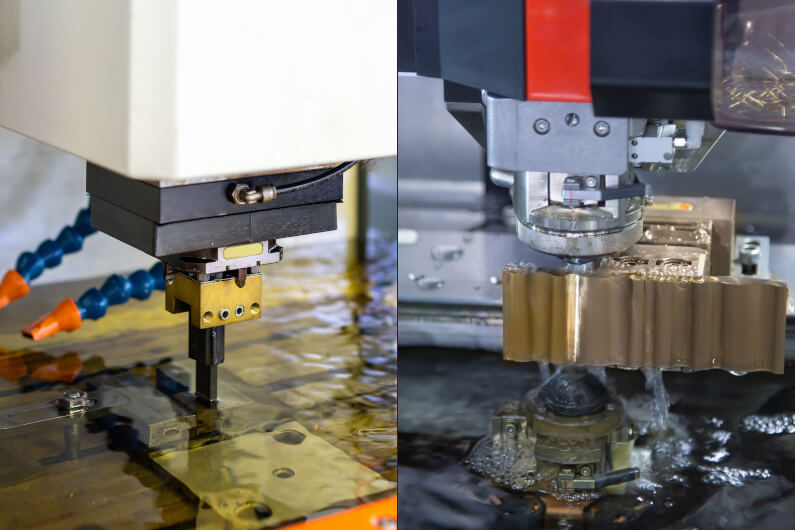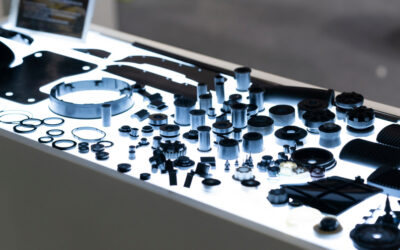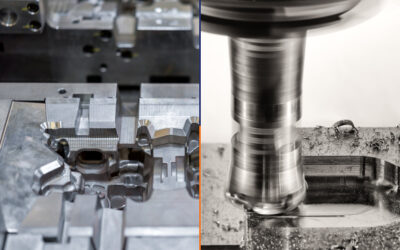Machining is a key process in many industrial applications, from creating metal parts for cars and machinery to creating specialized cutting tools. This technique involves specialized tools and equipment to cut, carve, or otherwise manipulate materials at a microscopic level. There are a number of different machining methods that engineers utilize in order to create the parts and components needed for various projects and industries.
Some common examples include CNC milling, CNC turning, and laser cutting. Each of these machining methods has its own set of unique properties, allowing engineers to choose the most appropriate one based on factors such as material type, part complexity, cost constraints, and desired end product. One of the most commonly employed techniques is electrical discharge machining.
This article discusses electrical discharge machining and the difference between sinker EDM and wire EDM.
What is Electrical Discharge Machining?
Electrical discharge machining is a type of manufacturing process that involves using electrical currents to rapidly heat and melt metal. This process can be used to cut even the hardest of materials with extreme precision and accuracy, making it an ideal technique for creating complex parts and components.
The process begins by creating an electrical current between two conductive electrodes that are immersed in a dielectric solution, such as oil. Once the current is established, the material to be machined is introduced into this environment and subjected to intense electrical discharges or sparks.
These sparks quickly form tiny holes in the material, causing it to erode away until the desired shape has been achieved. Because EDM can contour even the most challenging materials with great precision and accuracy, it has become a popular method of manufacturing for engineers and designers alike.
Two common EDM methods are sinker EDM and wire EDM.
How Does Sinker EDM Work?
This process works by applying an electrical charge to a workpiece in a solution, and then the electrode is lowered onto the workpiece. This motion of lowering the electrode is how the term ‘sinker’ came to be.
As the sinker moves across the surface of the workpiece in a controlled path, it gradually pares away material based on the current that it receives from nearby contacts. Because no physical contact is made between these two pieces during the cutting process, sinker EDM can be used to create highly precise and intricate surfaces without distorting them.
Applications
Sinker EDM is a versatile metalworking process that has a wide range of applications in the engineering world. In particular, sinker EDM is ideal for cutting intricate contours and shapes in metal sheets and castings. Because it can be used to produce smooth surfaces with very little stock removal, sinker EDM is also often used to create custom parts such as dies and molds.
Additionally, this process can also be used to make holes or pockets in otherwise solid sheets of metal. Overall, sinker EDM is a highly versatile tool that can be employed in a number of different engineering applications.
Learn more about sinker EDM.
How Does Wire EDM Work?

Example of a “Wire EDM” by LaurensvanLieshout
Public domain, via Wikimedia Commons
Essentially, a thin wire is fed through the workpiece, and an intense electrical current creates sparks along the length of the wire. These sparks quickly remove small chips of metal from the workpiece, creating precise holes and other complex shapes without any mechanical contact.
Since there is very little heat generated during the process, wire EDM works extremely well on delicate and heat-sensitive materials, making it a popular tool for engineers and designers in a wide range of industries.
Applications
Wire EDM is a widely used manufacturing technique that is employed in a variety of different applications. Its versatility means that it can be used for both intricate and complex projects, as well as more basic or routine tasks.
This process can be used to cut extremely precise parts and components. Additionally, it is commonly used in the automotive industry for the production of engine blocks and other components.
Finally, while wire EDM is often associated with industrial settings, it can also be effectively utilized in small-scale workshops and labs. When combined with modern computer technologies, such as CAD and 3D printing, this process makes it easier than ever before to custom-build highly specialized products or prototypes.
Learn more about Wire EDM.
Wire EDM vs. Sinker EDM
When choosing between a wire and sinker EDM, it is important to consider several factors. On the one hand, sinker EDMs are typically faster and more efficient at cutting through hard materials than their wire counterparts. However, due to their speed and efficiency, sinkers can also be less precise in their cuts and leave behind rough edges or warped surfaces.
By contrast, wire EDM’s use low-voltage electrical discharges that pass between an electrode bar and a thin metal wire to make extremely precise cuts. While this process can take longer overall, it results in smoother cuts with fewer errors and is often better suited for delicate materials or complex shapes.
In the end, which type of EDM one chooses will depend on the specific application at hand and which features are most important to achieving optimal results.
At Gensun, we are proud to offer our customers a wide range of EDM services. Whether you need precision wire EDM or sinker EDM, our team of experienced engineers will work with you to create a custom solution that meets your needs.






